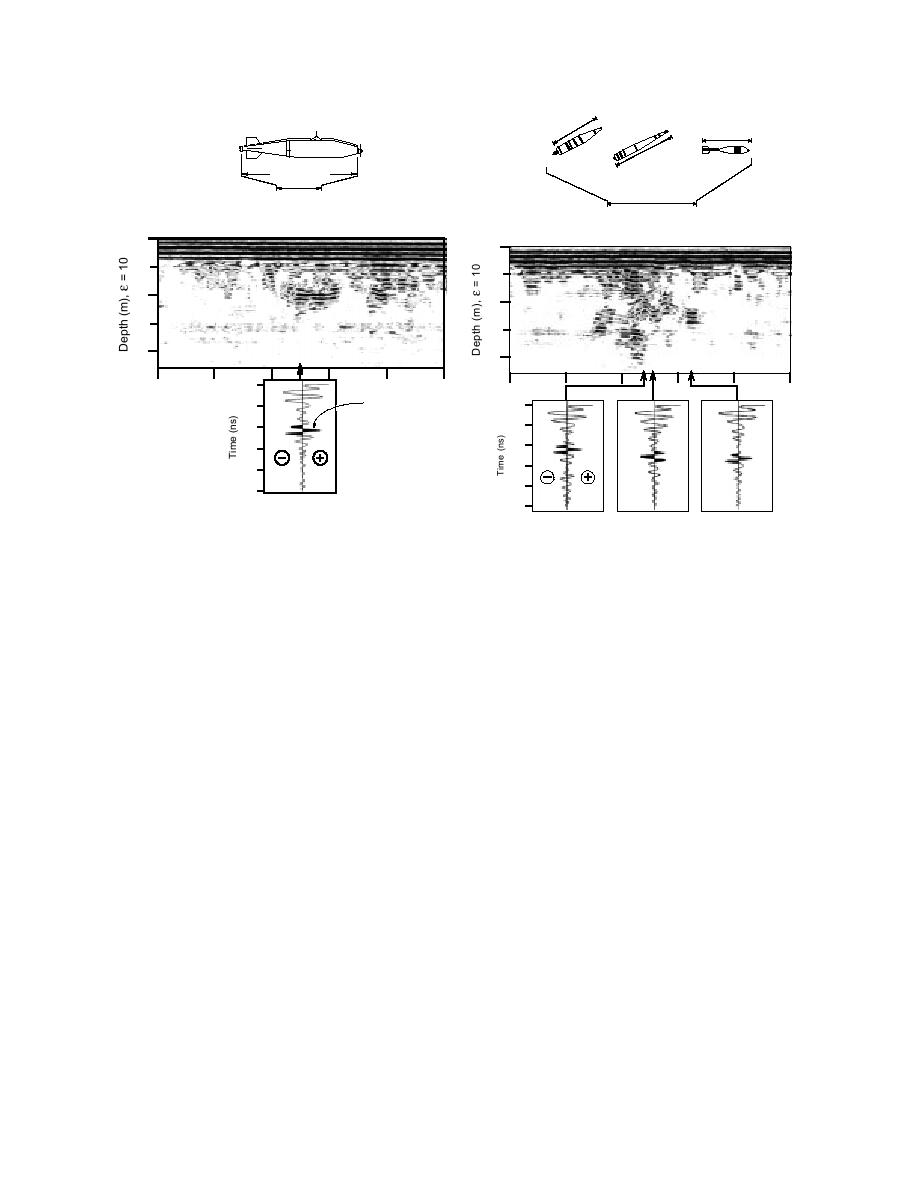
)
cm
General Purpose Bomb
61
(
in
26 in. (66 cm)
24
)
cm
61
in (
24
87 in. (221 cm)
7 ft (2.1 m)
12 ft (3.7 m)
533 ft
572 ft
239 ft
289 ft
0
0
1
1
2
Transect C
2
Transect K
Trace
Trace
0
Trace
Trace
0
500
0
500
300 MHz
0
10
10
20
20
30
30
40
Trace
251
40
50
Trace
Trace
Trace
251
256
326
50
Figure 8. Likely interpretations for two of the responses in Figure 7.
high radar gain and faded diffraction asymptotes, both
burden above the targets. Seventy diffractions were
of which indicate high attenuation rates, allow us to
identified in the 300-MHz survey and 48 in the 600-
estimate the soil dielectric properties at JPG (Fig. 11a)
MHz survey. We used a statistical approach to average
and theorize their effect upon antenna beamwidth and
the computational inaccuracies caused by the minor dif-
ferences in distance scale that resulted from uneven
and Delaney 1974); if it was any lower, then ε′ at 600
towing speeds. Seventy hyperbolas were clear enough
in the 300-MHz profiles to be used and 48 in the 600-
MHz would be distinctly lower than it is at 300 MHz.
We chose a value of 3 for εoo, which is characteristic of
MHz profiles. Both distributions (Fig. 10) exhibit nearly
the same average value and similar standard deviations
dry soils and applies to frequency values where water
is nondispersive. The JPG values of σ strongly influ-
(s.d.), although their distributions are slightly differ-
ence β below about 400 MHz, while εrel is the domi-
ent. The 300-MHz distribution is more bimodal, which
may reflect different orientations of deeper targets;
nant factor above about 400 MHz (Fig. 11b). Unfrozen
extended targets whose axial direction crosses that of
mineralogic clays can exhibit even stronger absorption
the transect produce hyperbolic reflections rather
and may preclude any radar penetration at our frequency
than diffractions, with values of ε′ reduced by the sine
range and above (Hoekstra and Doyle 1971).
of the intersection angle (Jezek et al. 1979). The 600-
We computed the effects of the soil properties upon
MHz distribution may reflect less target orientation
the round-trip propagation of both a model of our 300-
because it was limited to only lines AD and to shal-
MHz wavelet and an ideal monocycle-type waveform
lower depths.
(Fig. 12). A monocycle is the shortest possible pulse an
antenna can radiate and may be nearly achieved with
THEORETICAL DISCUSSION
than our system model and would provide the highest
possible target resolution. Both wavelets begin propa-
The average values of ε′, the range of σ, the fact that
gation with a local frequency of 400 MHz (Fig. 12a),
ε′ may be slightly less at 600 MHz than at 300, and the
which is that of our antenna model 5103 when used on
13



 Previous Page
Previous Page
